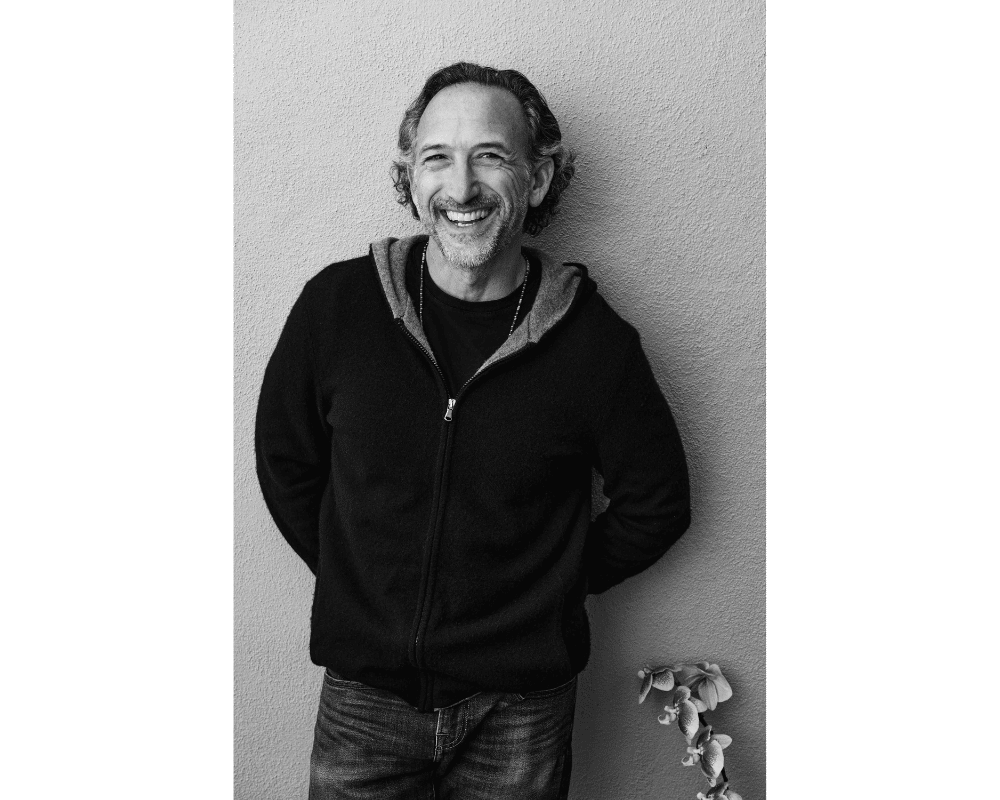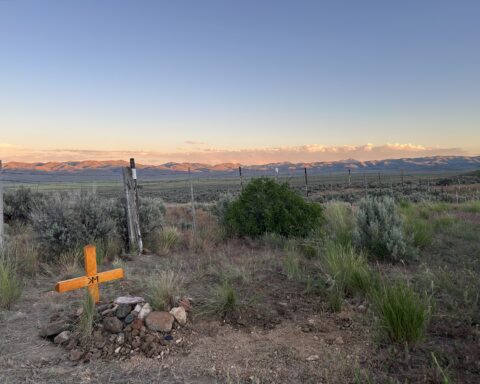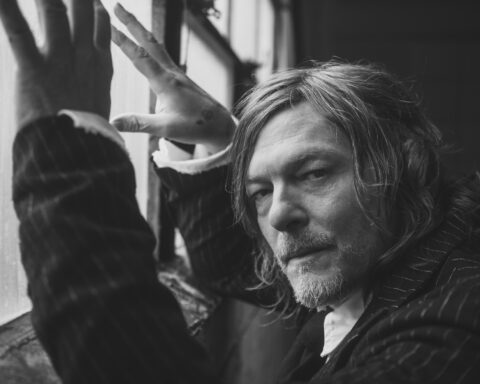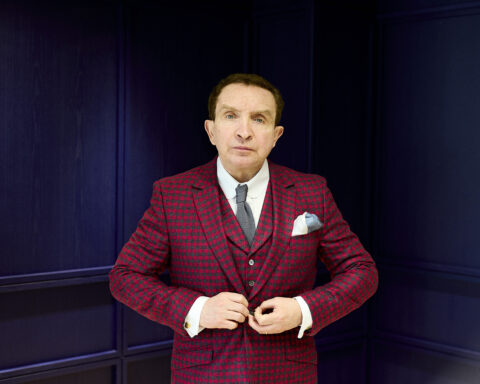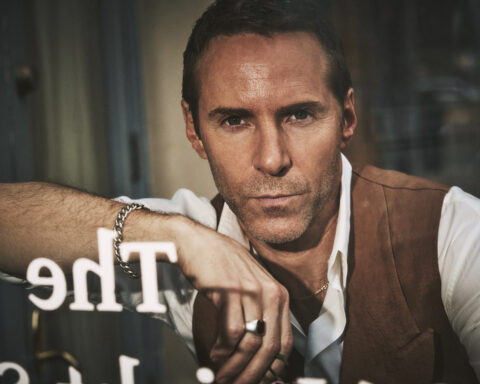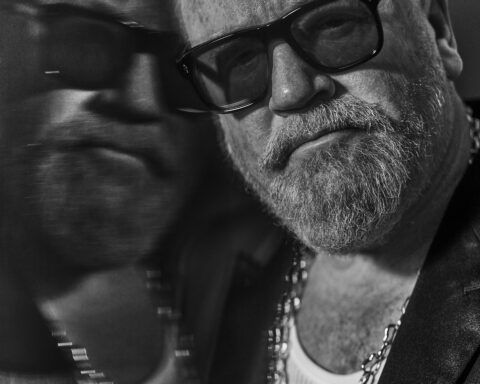Mark Goldman has enjoyed an impressive career at the peak of the media world, succeeding in high-level executive positions at Universal Studios and News Corp, and launching Current TV alongside former Vice President Al Gore, which was ahead of the curve in broadcasting user-generated content, and sold to Al Jazeera for $500 million in 2013. Now, as the co-founder and CEO of Happs, Mark has taken all he learned to shape a video sharing platform that puts the creator first. Chatting with Mr Feelgood, he explains the origin and future of Happs, which this summer raised $4.7 million from investors in a post-seed round, and what sets it apart from its better known peers like TikTok and Instagram. It’s an interesting story of watching, listening, adapting and pivoting from a man who, despite several decades at the sharp end of the media industry, is committed to helping others and is motivated by finding the good in people and life. And there’s wisdom here for anyone trying to start their own enterprise, big or small.

Mark Goldman // 📸: Lee Morgan
Can you tell us about why you started Happs and the philosophy behind it?
I was part of the founding team that started Current TV. Current was an idea that Al Gore had, and at the time he was still on the board of Apple, and was an early adviser to Google. He recognized that technology was evolving to the place where you didn’t need a big media company anymore to produce TV-quality content, and that this was going to really democratize the visual medium, and let everybody have a voice in what he knew from his political background was the most important medium for shaping public opinion. So he wanted to create a company that would empower this movement, and that was the idea behind Current.
I had the phenomenal opportunity of working on that business for a little over five years and just loved the vision, what we were doing, the stories that we were telling. I was the business media guy that Al and his partner Joel Hyatt brought in to execute the business. And then we had a creative media guy, who was our head of programming, whose name was David Neuman. David was at one point the head of television production at Walt Disney Television, and was the head of programming strategy for CNN, and basically started the careers of many very substantial personalities, including Anderson Cooper, Lisa Ling and many others. When we sold Current, David and I really felt like we left a huge opportunity on the table, and that there was still a lot of room to go in that original vision, and we wanted to do something together again. I didn’t particularly believe that the business models of new media companies that people were starting at the time were attractive, because they were all focused on advertising, and to me that was problematic. So we waited about five years, then when we felt like there were other business models that were possible, we decided to hop back in. Originally, we founded Happs to essentially reinvent live news for the next generation. Our idea was that we would create a technology-centric company that would source news and information stories through a mobile app that we created, which would basically allow anybody in the world to broadcast what’s happening around them. Then we would pair that with journalists all over the world who could essentially put context around the story. Because we had a cloud-based production system, we didn’t have to be tied down by having bureaus and people on staff sitting around waiting for stories to happen, and we could be much more nimble.
So we built this platform and launched this service, and we were doing some incredible things. We had a guy who took us through the site where the US military had blown up the head of ISIS in northern Syria a couple of days previously, and no Western news organization got within hundreds of miles of that site. We got there because we were empowering people who were living through the story to tell the story. But then it dawned on us that we were thinking very traditionally. We had a small team of producers who were producing the stories. And even though the platform was not traditional, and the way we were covering news was not traditional, the fact we were still sitting at the center of everything and producing it was very traditional.
We realized the much bigger and more interesting opportunity was to take this incredible technology platform that we have built, and basically empower anybody in the world to be their own storyteller and to use these tools to create their own visual media entity. And so that’s what we’ve now done. We’ve got rid of our content team and really focused on the technology part, to make this into a platform where anybody can be be a TV-quality production entity. We now have journalists who are using it to do news, just like our original vision, but we have many other types of creators who are using it as well. We have musicians, we have artists, cooks, pretty much anybody you can think of who wants to create their own visual media.

Mark and his partner, acclaimed yogi Maya Fiennes // 📸: Lee Morgan
What sets you apart from some of the better known companies in this space, like TikTok or Instagram?
There are a few things. The first thing is, we’ve built Happs around the idea of collaboration, and this being a community of creators working together, to help each other, to build an audience and ultimately a business from their efforts. A lot of people do that informally on these other platforms, but we’ve built it into the framework of the product. We pair people, and they connect on their own, and you’re encouraged to collaborate. Some collaboration is among creators in the same medium, like musicians, while sometimes they can come from different mediums, like while a musician plays, an artist will draw.
Another important way that we’re different is we built Happs on the idea of being an open platform. So we don’t lock people into only broadcasting on Happs, quite the opposite. We’ve connected Happs to the main social platforms, so Facebook, Twitter, Twitch and YouTube. We also have a relationship with Reddit. So people are able to do a broadcast from Happs and reach their audience across all of those platforms at the same time.
And we’re built originally for creators, so creators can start earning money on day one on this platform. A big difference between Happs and other social platforms is that we were not built around advertising. Platforms that are built around advertising make all sorts of decisions about the types of content that people see that are not aligned with the interests of the creator or their audience. Happs is built creator-first and our platform is designed to serve the needs of creators by helping them reach a broader audience and get paid for their efforts.

Mark Goldman // 📸: Lee Morgan
What are your broader thoughts on this growing creator economy? It’s something you’ve been involved in for a long time, since your work at Current TV which was ahead of the game in many ways. How do we balance this democratization of content with protecting the value of professional journalists, photographers etc?
I think there’s really two major shifts that we’re playing to here. The first is the whole creator economy, and the way that people are now making money from their passion or their expertise, independent of a traditional job, as their sole income or their supplementary income. This is clearly a wave that we’re seeing. The equivalent is Etsy. There’s tons of people who create physical things and make a living either as their primary living or or supplement their primary income through that. Happs is the digital creator version of that.

Happs in action
This is particularly interesting for me, as someone who trained as a journalist and has spent 20 years working in the media. Because if I’d have trained as a carpenter, and spent my life making things out of wood, I think I would know how to sell that in this new economy. Whereas as a journalist, it can be hard to work out how you embrace this new way and still make money. But it sounds like that’s what you’re offering?
Yeah, it’s interesting, because the second shift I was going to come to is that media entities were really just financing and distribution, that’s the role they play. Often they would hire freelancers to create the content, or buy content that was already produced, and they just financed, marketed and distributed it. What we’re saying is you don’t really need that anymore. You can now take your creativity directly to the people who are interested in it, you can form a relationship with those people, and have those people compensate you for the work that you’re doing. So while I agree with you, it’s not as immediate a pay-off, and it is a struggle for some journalists to think about this new way of doing it, I believe that ultimately there’s probably more opportunity in it for journalists, because instead of constantly trying to sell your ideas to a media company to back you, it’s more empowering to sell it directly to the end consumer. And whereas the media company owns that consumer under the existing model, now you own your consumer.

Mark Goldman // 📸: Lee Morgan
So how does your payment model work? How do the creators earn money?
The first way is that we’ve got a voluntary system where people can give creators a monthly payment to support their work. We see people who give $1 a month, and we’ve had people give over $100 a month. We will roll out exclusive content in the future where you can put content behind a paywall and charge people to gain access to that content. The second way is we have what’s called a ‘gamification’ layer on there, where we give people coins for participating on Happs, and then people can also purchase coins, and they use those coins to buy awards that they give to broadcasters. And we have plans to power other ways for creators to make money on the platform in the future as well.

Mark Goldman // 📸: Lee Morgan
Tell us a little more about your personal motivations, and why this project is important to you?
I think having grown up in the media business and seeing how they act as a middleman, picking and choosing the stories and the content and the access that people have, I’m just totally inspired to free people from that process, and allow them to flourish with their creativity. I’ll use the example of musicians, there are so many talented musicians out there that never get a chance to be discovered because they may not have the right connections. I want to give them the opportunity to find their audience and make money off of their talent. The same with journalists, there are tons of journalists who are covering incredibly important stories that they’re incredibly passionate about, but it may not fit the box of a media company and what they’re looking for. So I want to be able to empower those people to go directly to the audience that cares about what they’re interested in, so they can support themselves financially. That’s what gets me up every day and makes me do the things that we’re doing.
And for me, it’s also about human connection. The thing about our platform is it opens up voices that we would never have access to otherwise. For example, we had a guy a few months ago who’s a football player in Iraq, and he did a live broadcast, talking about his interests. But what he was really doing was giving people a human connection to somebody in Iraq, and I believe if people had more access to those people, and those voices, the decisions we would make in society would be very different. Because we would know people on a human level, rather than just read about their governments. That human connection can happen, for example, by somebody doing a cooking class and taking you into their home. And now all of a sudden, we’re in Thailand or Colombia or Iraq. If we could just get more people to meet each other, and get to know each other, I believe we’ll end up with a much more humane and better world.
Check out Happs here.


